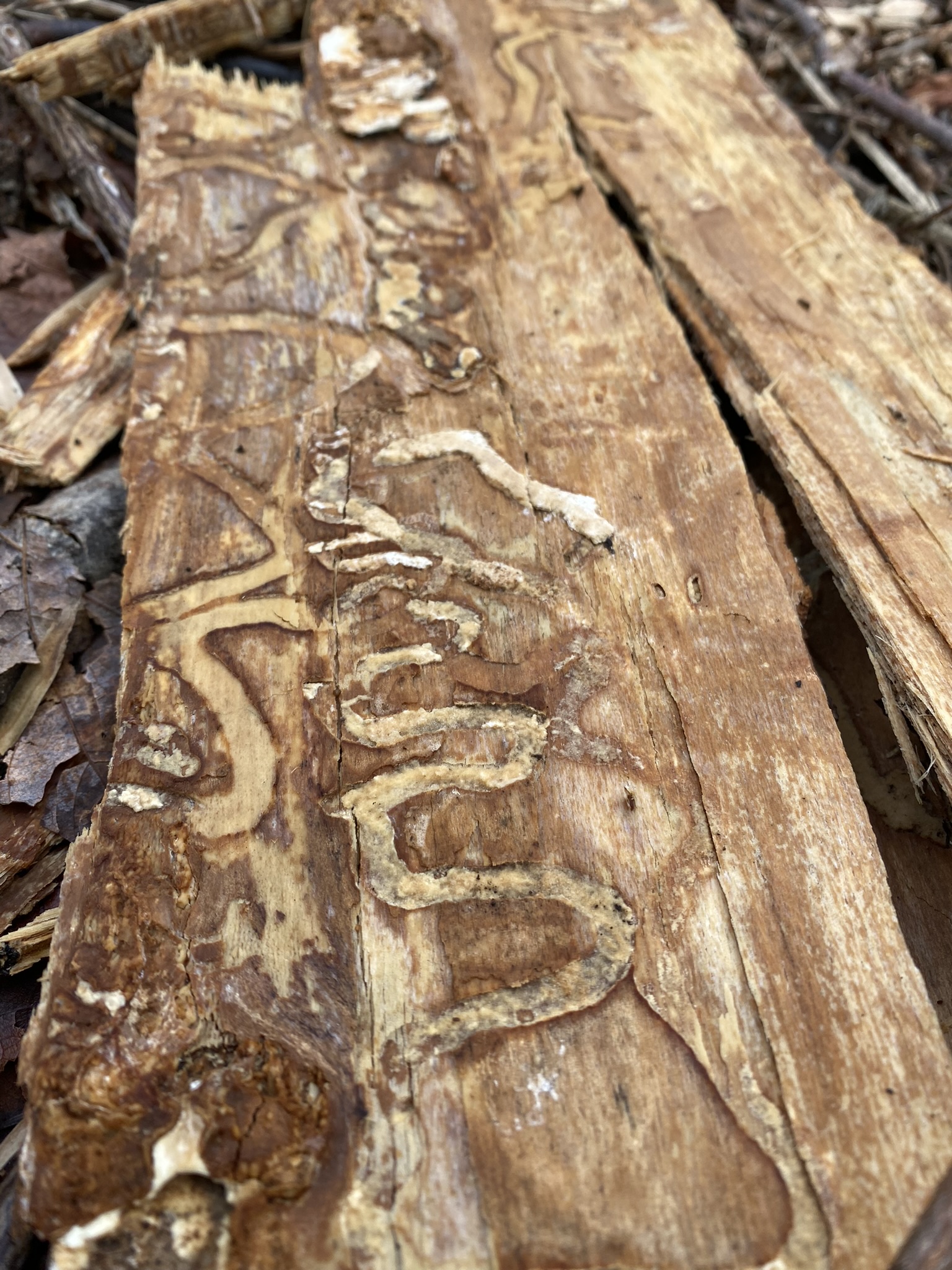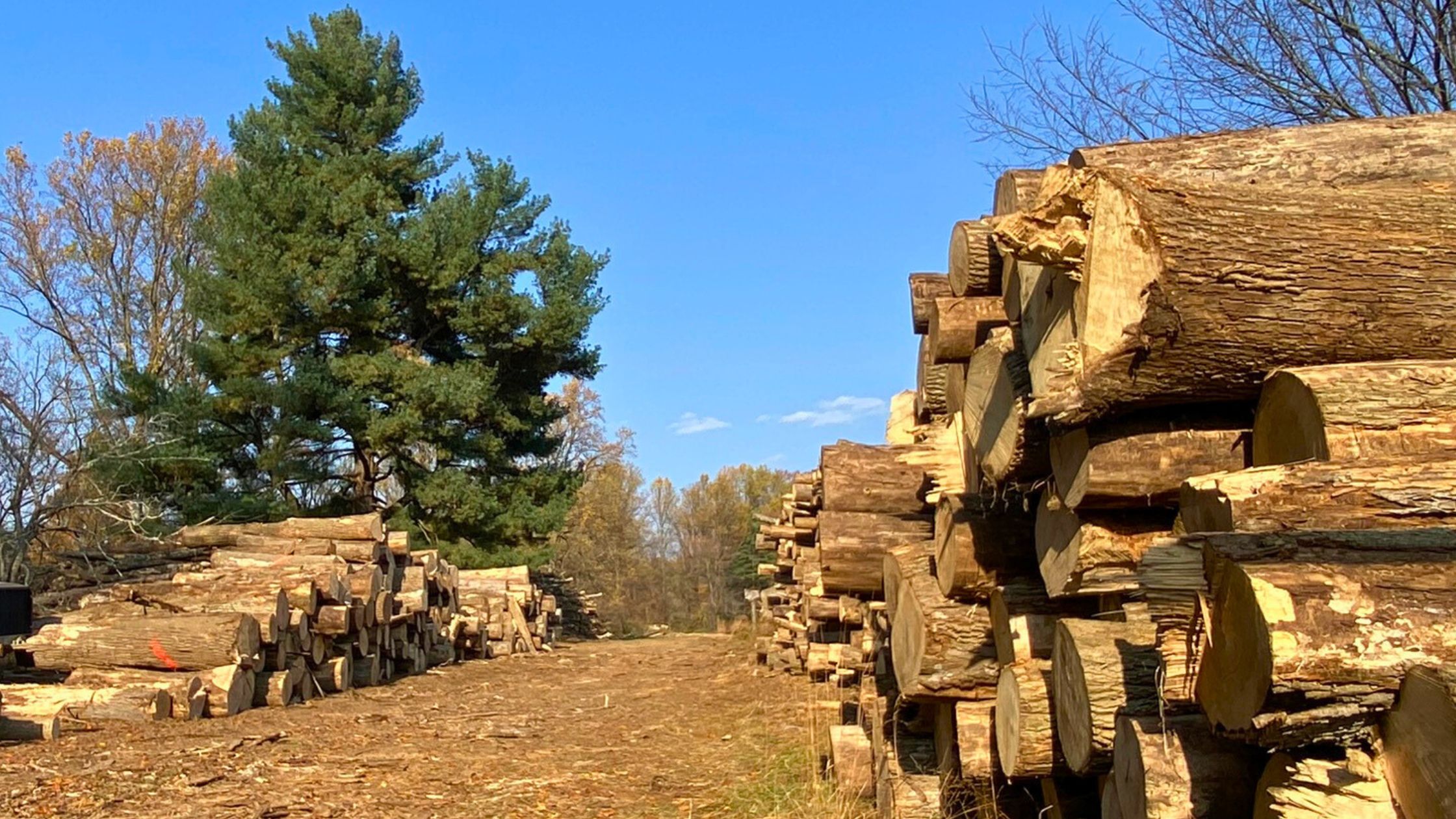Ash Tree Crisis
Tyler Arboretum is pleased to announce that it will be reopening a section of its trails to the public on April 7, 2024. Tyler’s trails were closed after nearly 1,600 dead and hazardous trees were identified in its 550 acres of natural areas that lie outside the deer exclusion fence. Tyler will be opening 11.5 miles of trails to the public on April 7th, just in time for spring blooms and seasonal wildflower displays.
History: Tyler Arboretum noticed EAB effects in early 2022, closing trails due to hazardous dead trees, started researching options, and writing grants for tree removal and eventual revitalization.
Funding: Removal efforts began in 2023, funded by reserves, private donations, and the last phase will be funded from a grant from PA Department of Conservation and Natural Resources (DCNR). Costs for tree removal are estimated at $500,000, mainly paid from reserves and individual donations.
Tree work: Tree removal utilized forestry mowing, mechanized harvesting, and arborist techniques while considering wildlife habitat and erosion control.
Future plans: Tyler is thrilled to be reopening a portion of trails in April, but will continue work including: Middle Farm restoration, trail stabilization, additional hazard removal, education, monitoring of invasive species growth, and ongoing stewardship efforts to rehabilitate the areas that had large concentrations of ash.
Stewardship going forward: Tyler hopes to replant a large number of trees starting in 2025, but trail work and stabilization are already underway. Tyler will continue to need support from our community as we recover from this crisis.
Emerald Ash Borer (EAB) Facts:

- The Emerald Ash Borer is a green boring beetle from northeast Asia, first detected in the US in 2002, likely arriving via wood packing material.
- Damage to ash trees happens from the EAB by laying eggs in the crevices of the bark, with their larvae feeding on inner bark and phloem, creating distinctive, squiggly galleries.
- Tree Death occurs in 99% of EAB infestations cases within 3 to 4 years, evidenced by wilting foliage, branch dieback, and thinning canopy.
- Widespread destruction of ash trees from the EAB includes 36 states and DC, killing millions of ash trees, including all native North American ash species, and costing billions of dollars.
- Treatments, like quarantines, have proven ineffective in containing the EAB. Chemical treatments can work, but are not guarantees, and were too costly for the large stands of ash trees at Tyler. Promising new programs using parasitic wasps are underway.
FAQ

- Public Safety: Tyler’s decision to close trails was based on mapping nearly 1,000 dead ash trees near hiking trails, indicating significant risk to Public Safety.
- Did Tyler sell the wood? The market for ash wood is flooded due to EAB devastation, making wood sales unfeasible for Tyler. The sheer volume of trees down was too large to leave in the natural areas, so Tyler found a contractor to remove many of the large logs and to grind smaller logs. That work continues and is visible from Gate 4, which will remain closed for some time.
- Other threats to Tyler’s Trees: While EAB primarily attacks ash trees, other invasive pests like the Hemlock woolly adelgid threaten different species. Tyler will be watching these pests and other fungal issues in its tree population carefully.
- Other Organizations: Tyler’s trail closure decision was based on specific risk assessments due to large stands of ash trees, and other organizations may have differing situations regarding EAB impact.
More Resources
More information on the ecological damage this region is facing from Emerald Ash Borer can be found here:

